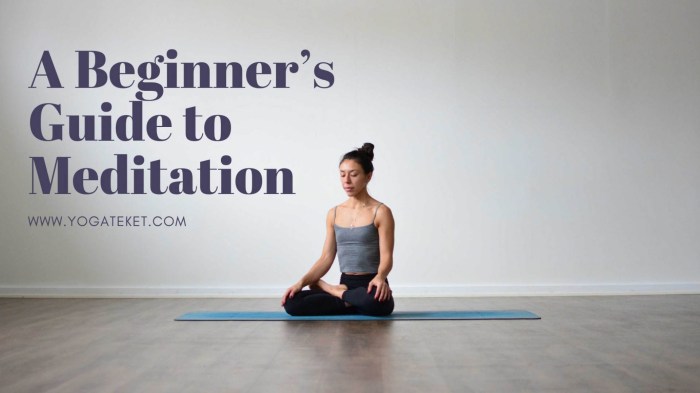3 Steps to Practice Meditation for the First Time sets the stage for this enthralling narrative, offering readers a glimpse into a story that is rich in detail with an informal yet serious style and brimming with originality from the outset. In this guide, we will explore the essential steps to kickstart your meditation journey and experience the profound benefits it can bring to your life.
Meditation has been practiced for centuries and holds the key to unlocking a sense of inner calm and clarity amidst the chaos of everyday life. By following these simple steps, you can begin your meditation practice with confidence and ease.
Introduction to Meditation: 3 Steps To Practice Meditation For The First Time

Meditation is a practice that involves focusing the mind on a particular object, thought, or activity to train attention and awareness, and achieve a mentally clear and emotionally calm state. The benefits of meditation are numerous, including reducing stress, improving concentration, promoting emotional health, enhancing self-awareness, and increasing overall well-being.
Origins of Meditation Practices
Meditation has been practiced for thousands of years, with its origins rooted in ancient Eastern traditions such as Hinduism and Buddhism. It was initially used as a spiritual practice to deepen understanding of the sacred and mystical forces of life. Over time, meditation techniques have evolved and spread to various cultures and societies around the world.
Types of Meditation Techniques, 3 Steps to Practice Meditation for the First Time
There are several types of meditation techniques, each with its own focus and approach. Some common types include:
- Mindfulness Meditation: Involves paying attention to the present moment without judgment, often focusing on breathing or bodily sensations.
- Transcendental Meditation: Uses a mantra or phrase to help the practitioner achieve a state of relaxed awareness.
- Loving-Kindness Meditation: Involves cultivating feelings of love and compassion towards oneself and others through a series of guided phrases.
- Body Scan Meditation: Involves systematically scanning the body for any sensations or tensions, promoting relaxation and awareness.
Each type of meditation technique offers unique benefits and can be tailored to individual preferences and goals.
Preparing for Meditation

To have a successful meditation session, it is essential to prepare yourself and your surroundings properly. Finding a quiet and comfortable space is crucial to help you focus and relax during meditation. Here are some tips to help you get ready:
Creating a Quiet and Comfortable Space
- Choose a peaceful area free from distractions, such as noise and clutter.
- Consider dimming the lights or using candles to create a calming atmosphere.
- Use cushions or a meditation mat to sit or lie down comfortably.
Sitting or Lying Down Comfortably
- Find a position that feels comfortable for your body, whether sitting cross-legged on the floor or lying down on your back.
- Keep your spine straight but not rigid to allow for easy breathing and relaxation.
- Place your hands on your lap or by your sides, whichever feels most natural to you.
Setting Intentions for Your Meditation
- Before starting your meditation session, take a moment to set intentions for what you hope to achieve or focus on during your practice.
- Whether it’s finding inner peace, reducing stress, or simply being present in the moment, having clear intentions can guide your meditation.
- Visualize your intentions and hold them in your mind as you begin your meditation practice.
Steps to Practice Meditation for the First Time
Meditation can be a powerful tool to help calm the mind and reduce stress. Here are three steps to help you practice meditation for the first time.
The First Step: Focusing on the Breath
One of the fundamental aspects of meditation is focusing on the breath. Sit comfortably and close your eyes. Take deep breaths, focusing on the sensation of the air entering and leaving your body. Allow your breath to be natural and steady, bringing your awareness to the present moment.
Detail the Second Step: Acknowledging Thoughts Without Judgment
As you meditate, thoughts may arise in your mind. Instead of trying to push them away, acknowledge them without judgment. Notice the thoughts, let them pass through your mind, and gently bring your focus back to your breath. Remember, it’s normal for the mind to wander during meditation.
Describe the Third Step: Bringing the Focus Back to the Breath When the Mind Wanders
When you notice your mind wandering to thoughts, emotions, or sensations, gently guide your focus back to your breath. You can use a simple phrase like “inhale, exhale” to anchor your attention. Allow yourself to let go of distractions and return to the present moment with each breath.
Conclusive Thoughts

Embark on your meditation journey with these foundational steps, and discover the transformative power of mindfulness and self-reflection. Start your day with a moment of peace and serenity, as you connect with your inner self through the practice of meditation.